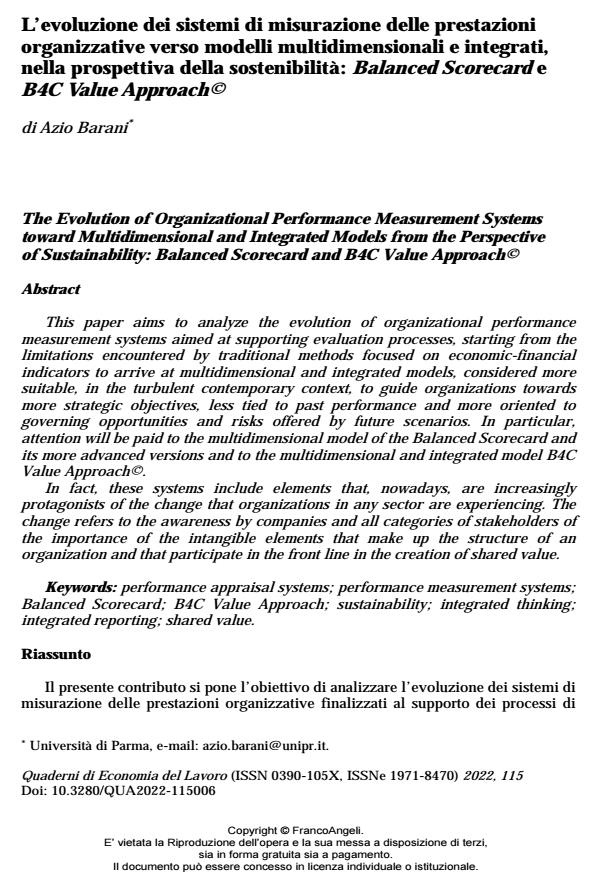The Evolution of Organizational Performance Measurement Systems toward Multidimensional and Integrated Models from the Perspective of Sustainability: Balanced Scorecard and B4C Value Approach©
Journal title QUADERNI DI ECONOMIA DEL LAVORO
Author/s Azio Barani
Publishing Year 2025 Issue 2022/115
Language Italian Pages 29 P. 133-161 File size 670 KB
DOI 10.3280/QUA2022-115006
DOI is like a bar code for intellectual property: to have more infomation
click here
Below, you can see the article first page
If you want to buy this article in PDF format, you can do it, following the instructions to buy download credits

FrancoAngeli is member of Publishers International Linking Association, Inc (PILA), a not-for-profit association which run the CrossRef service enabling links to and from online scholarly content.
This paper aims to analyze the evolution of organizational performance measurement systems aimed at supporting evaluation processes, starting from the limitations encountered by traditional methods focused on economic-financial indicators to arrive at multidimensional and integrated models, considered more suitable, in the turbulent contemporary context, to guide organizations towards more strategic objectives, less tied to past performance and more oriented to governing opportunities and risks offered by future scenarios. In particular, attention will be paid to the multidimensional model of the Balanced Scorecard and its more advanced versions and to the multidimensional and integrated model B4C Value Approach©. In fact, these systems include elements that, nowadays, are increasingly protagonists of the change that organizations in any sector are experiencing. The change refers to the awareness by companies and all categories of stakeholders of the importance of the intangible elements that make up the structure of an organization and that participate in the front line in the creation of shared value.
Keywords: performance appraisal systems; performance measurement systems; Balanced Scorecard; B4C Value Approach; sustainability; integrated thinking; integrated reporting; shared value.
Azio Barani, L’evoluzione dei sistemi di misurazione delle prestazioni organizzative verso modelli multidimensionali e integrati, nella prospettiva della sostenibilità: Balanced Scorecard e B4C Value Approach© in "QUADERNI DI ECONOMIA DEL LAVORO" 115/2022, pp 133-161, DOI: 10.3280/QUA2022-115006